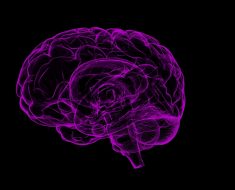Researchers are helping to explain why some people anticipate and react to fast-moving objects much quicker than others.
When Collingwood footballer Jeremy Howe launches into the clouds to take a “speccy” over an AFL opponent, or Serena Williams returns a lightning-quick tennis serve – most of us marvel at their skill and speed.
Considering what the human brain overcomes to make it happen, these feats are nothing short of miraculous. When we watch a moving object, such as a fly, we experience it in the present. But delays in how the brain processes the image from the eye means our awareness of visual events lags behind their occurrence.
So to make it possible to swat a fly or catch a moving ball the brain has developed a way to overcome this lag. This means we are unaware of this delay and can interact with even rapidly moving objects – in the case of AFL footballers and elite tennis players extremely efficiently.
University of Melbourne-led research investigated this phenomenon and found that the delay with which people make eye movements to a target predicts where they perceive the target, and some people like sports stars do this better than others.
Lead researcher and Melbourne School of Psychological Science Senior Research Fellow Dr. Hinze Hogendoorn said the brain then worked out what the target would do next.
“The cool thing about that is that the brain apparently ‘knows’ how long the eye movement is going to take, uses that to calculate in which direction to send the eye movement, and also uses that same signal to tell awareness where the object is in the first place,” Dr. Hogendoorn explained.
Published in the Journal of Neuroscience, the paper looked at transmission delays in the nervous system that pose challenges for pinpointing moving objects due to the brain’s reliance on outdated information to determine their position.
“Acting effectively in the present requires that the brain compensates not only for the time lost in the transmission and processing of sensory information, but also for the expected time that will be spent preparing and executing motor programs,” the paper said. “Failure to account for these delays will result in the mis-localisation and mistargeting of moving objects.”
In visual motion, the future position of a moving object can be extrapolated based on previous samples. The team recently demonstrated that these neural mechanisms do indeed reduce the lag with which the brain represents the position of a moving object.
Source: Read Full Article





